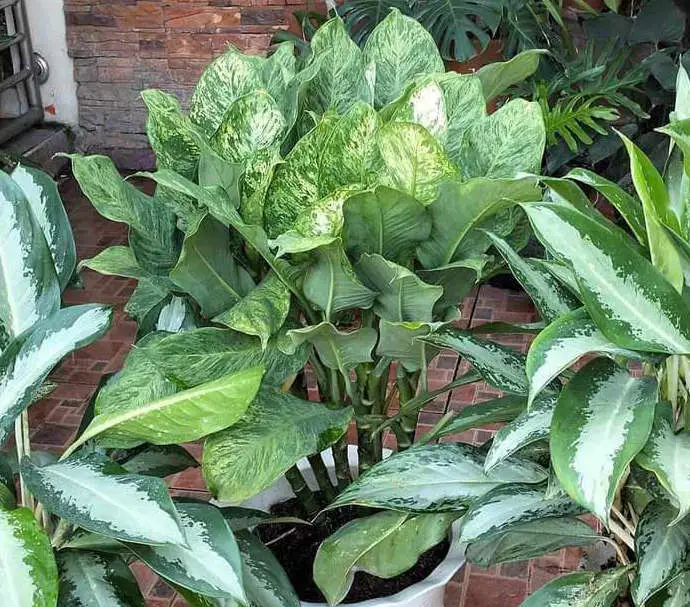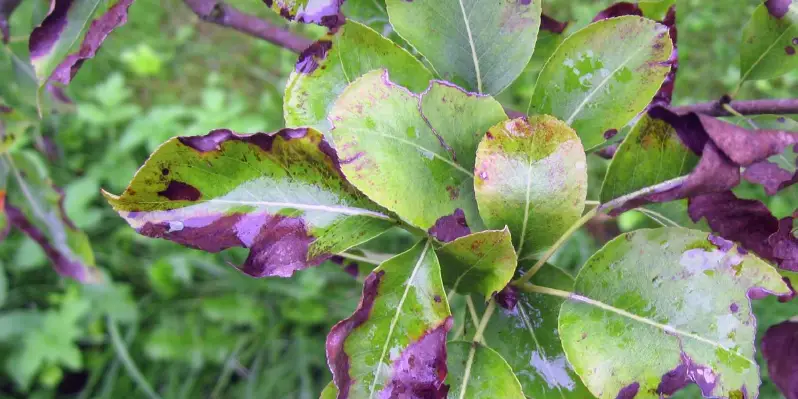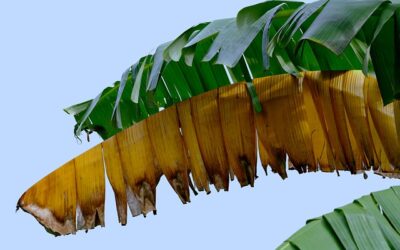Do you have a monstera plant in your home or office? If so, you may have noticed that the stems on some of the leaves are brown. This can be quite puzzling, as most people expect monstera plants to have green stems.
So what’s going on? In this blog post, we will explore the reasons behind this phenomenon and offer some tips for keeping your Monstera looking its best.
What Are the Brown Stems on Monstera?
The brown monstera stem is just an old sheath that is dying and being replaced by a new lead sheath. It is a natural process that happens as the plant grows. The brown stem will eventually fall off, revealing a new, green stem underneath. So don’t worry – your plant is perfectly normal!
If you want to tidy up your monstera and remove the brown stems, you can do so with a sharp knife or scissors. Just be careful not to damage the new, green stems underneath. With a little care, your monstera will be looking as good as new in no time!
However, if the brown stem issue is spreading quickly and affecting many leaves, it could be a sign of a more serious problem. Brown stems can sometimes be caused by too much sun, lack of water, or nutrient deficiencies. Let’s take a closer look at each of these issues.
1. Too much water
If the stem is brown and mushy, it is likely that your plant is getting too much water and is suffering from root rot. This is a serious problem that can kill your plant if not treated quickly. If you think your plant may have root rot, it’s important to take action immediately.
First, check the soil to see if it is wet or dry. If it is wet, you will need to reduce watering and allow the soil to dry out completely between watering. If the soil is dry, you will need to increase watering.
It’s also a good idea to check the drainage of your pot. Make sure that there is a hole in the bottom so that water can drain out freely. If not, the roots may become waterlogged and start to rot.
2. Too much direct sunlight
If the brown stem is dry and crispy, it may be a sign that your plant is getting too much direct sunlight. Monstera plants prefer bright, indirect light. So if your plant is in a spot that gets direct sunlight for more than a few hours per day, it’s time to move it.
Move your plant to a darker spot and observe it over the next few days. If the brown stem issue improves, then you know that was the problem. If not, it’s time to look at other possible causes.
3. Not enough water or humidity
Monstera plants live in humid tropical rainforests, so they need quite a lot of water to thrive. If the stems are brown and dry, it’s likely that your plant is not getting enough water.
You can test the soil to see if it is dry by sticking your finger in it. If the soil is dry, you will need to increase watering. If the soil is wet, you will need to reduce watering.
It’s also a good idea to check the humidity around your plant. Monstera plants prefer high humidity, so if the air in your home or office is dry, your plant may be suffering.
There are a few easy ways to increase the humidity around your plant. You can use a humidifier, put your plant on a pebble tray, or mist it with water every day.
You can also try grouping your monstera plant with other plants. This will create a mini rainforest environment that will be perfect for your plant!
4. Disease or pests
If the brown stem issue is accompanied by other problems, such as yellow leaves or mushy stems, it’s likely that your plant is sick. The most common diseases that affect monstera plants are fungal diseases.
If you think your plant may be sick, it’s important to take action immediately. The first step is to isolate the plant from any healthy plants. This will prevent the disease from spreading.
Next, you will need to treat the plant with a fungicide. You can find these at your local garden center or online. Be sure to follow the instructions on the label carefully. I like using neem oil as I’ve found it to be the most effective method and it’s safe to use indoors.
Once you have treated the plant, you should see a noticeable improvement within a few days. If the problem persists, it’s a good idea to consult with a professional.
Pests can also cause brown stems on monstera plants. The most common pests that affect these plants are aphids, mealybugs, and scale insects.
If you think your plant has pests, neem oil is a great natural solution. Neem oil is safe for humans and animals, but it is deadly to pests. Simply mix a few drops of neem oil with water and spray it on your plant.
5. Fertilizer problems
If you have recently fertilized your plant, it’s possible that the brown stem issue is a result of fertilizer burn. This happens when the roots of the plant are exposed to too much fertilizer, which can cause them to dry out and die.
If you think your plant has fertilizer burn, the first step is to stop fertilizing. Once you have done this, you will need to flush the soil with water to remove any excess fertilizer.
After you have flushed the soil, you should see a noticeable improvement within a few days. If the problem persists, it’s a good idea to consult with a professional.
As you can see, there are many possible causes of brown stems on monstera plants. By taking the time to troubleshoot the problem, you can figure out what is causing the issue and take steps to fix it. Your plant will thank you for it!
Conclusion
In conclusion, brown stems on monstera plants can be caused by a variety of factors. However, the most common cause is that the sheath is simply dying and being replaced by a new one.
Brown monstera stems are only something to be concerned about if accompanied by other problems, such as yellow leaves or mushy stems. If this is the case, it’s likely that your plant is suffering from a disease or pests.
The best way to prevent brown stems on monstera plants is to provide them with the proper care. This includes watering, humidity, and fertilization. By following these tips, you can keep your plant healthy and happy for years to come! Thanks for reading!
Tim is an avid gardener from the UK. He was the founder of PlantCarer.com from 2021 to Sep 2023. He sold PlantCarer.com to Aaron. He has since started his own business called Seed To Supper, which provides new gardeners all the materials you need in a box (pots, seeds, compost and instructions) to grow your own delicious and nutritious vegetables and herbs from start to finish – no garden required.








0 Comments